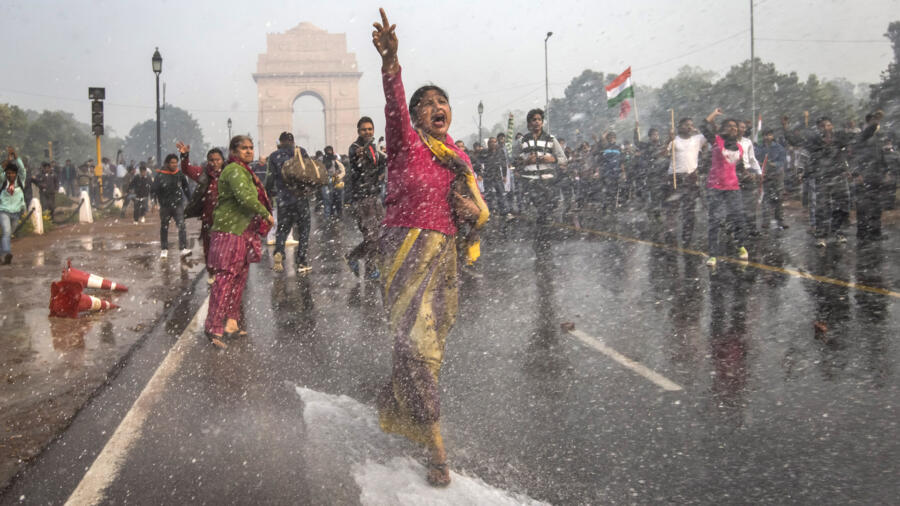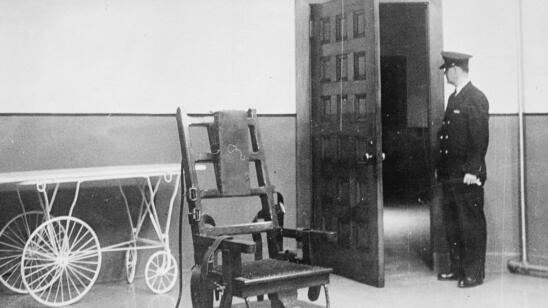In December 2012, protests broke out across India after news of a horrific gang rape exploded into global view. The crime—the gang rape of 23-year-old physiotherapy student, Jyoti Singh, committed by six men on a bus in the capital territory of Delhi—was so brutal that it shocked the world and jolted the Indian legal system into reconsidering its protections for women.
The attack took place on the evening of December 16, 2012 in southwest Delhi’s Munirka, a concrete urban village crowded with students. Singh and a male friend, Awindra Pandey saw Life of Pi —a movie about a young Indian boy who struggles to survive against incredible odds—before hopping a bus.
Once they boarded the bus, six men shut off the lights and locked the doors before beating Singh and Pandey with iron rod. All of the perpetrators had been drinking before the assault, police say, and had robbed a carpenter on the same private bus earlier in the day.
After brutally raping and torturing Singh on the moving bus, including with the iron rod, the perpetrators threw her and Pandey out of the vehicle. Both victims were bleeding and stripped of their clothing and other valuables.
Thirteen days later, Singh—who famously became known as “Nirbhaya” (meaning “fearless”) due to sex-assault-victim privacy laws in India—died from related injuries at a Singapore hospital. In the wake of her death, Asha Devi, the victim’s mother, said she wanted her daughter’s name made public because she was “not ashamed to name her” and that victims and families of violent crimes shouldn’t be made to “hang their heads in shame.”
Ultimately, the national uproar sparked by the crime led to the passage of several amendments to India’s existing laws on sexual offenses, though some activists say there’s still more to be done to protect women from assault.
Read on for more details on the Nirbhaya case that shocked India—and the world.
How did Delhi police first learn about the assault?
On December 17, the day after the attack, Pandey filed a first information report, or FIR, with the Vasant Vihar police station. An FIR is a criminal complaint document that some countries, including India, use that can set the investigative process in motion if police decide there is enough evidence. An FIR can be filed by a victim, a witness or close associate of the victim on their behalf.
Following the FIR, Delhi police sprang into immediate action to locate the offenders.
How did the investigation proceed after the gang rape?
Less than 24 hours after the attack, police used CCTV highway-camera footage to locate the key suspect, bus driver Ram Singh. He was found in the same vehicle where the assault took place, and immediately arrested.
Police located the other perpetrators using sketches based on Pandey’s descriptions and texts sent from the victims’ stolen phones.
The other defendants, including Mukesh Singh, Pawan Gupta, Akshay Thakur, Vinay Sharma and an unnamed 17-year-old, were arrested within days. Along with the perpetrators, police found the victims’ bloodstained clothes, as well as the iron rods used in the assault.
What happened to Jyoti Singh (‘Nirbhaya’) after the attack?
Singh was transferred to Safdarjung Hospital in New Delhi to receive medical care. She gave official statements on December 16, 21 and 25 using gestures and multiple-choice answers. The perpetrators’ lawyers asked that her three dying declarations not be permitted in court, but they were upheld.
She was later airlifted to Mount Elizabeth Hospital in Singapore for more extensive medical care. She ultimately died of liver failure on December 29.
How did the public respond to the Delhi crime?
A wave of international demonstrations demanded justice for Nirbhaya and crackdowns on sexual assault. UN Women, a global advocacy group working for gender equality and improved human rights, called for swift, decisive action to protect more women in the future.
The Nirbhaya case also sparked a series of conversations about sexual-assault laws in India. Many women claimed that navigating the legal system in the wake of an alleged sexual assault was too difficult for many victims.
What happened to the six defendants?
The juvenile perpetrator (whose name was not officially released) was convicted of murder and rape. He received the maximum sentence for underage perpetrators—three years in jail. He was released in 2015.
The driver, Ram Singh, is believed to have committed suicide in Tihar Jail in March 2013, though some have alleged he was murdered by other inmates.
At the end of a “fast track” trial in a Metropolitan Magistrates’ Court, the four remaining defendants were convicted of rape, kidnapping, murder and destruction of evidence in September 2013. They were sentenced to execution by hanging. The death penalty is handed out in India only in the “rarest of rare” cases, indicating that the court recognized the gravity of the crime.
Now on death row, three of the convicted attackers lodged clemency pleas with the Supreme Court in 2017. This is one of their last legal resorts after their initial appeals resulted in having their death sentences upheld in 2018. Their clemency pleas were denied that same year. Akshay Thakur, another perpetrator, remains on death row as well.
What changes came about in the Indian legal system as a result of the Nirbhaya case?
In 2013, the Finance Minister announced the establishment of the Nirbhaya Fund, aimed at funding initiatives for women’s safety, security and economic empowerment.
Most notably, in March 2013, the Lok Sabha (India’s “House of the People”) and Rajya Sabha (India’s “Council of States”) passed amendments—the Criminal Law (Amendment) Act, 2013, sometimes known as the Nirbhaya Act—to the Indian Penal Code, Indian Evidence Act and Code of Criminal Procedure, 1973, on punishments for sexual assault. The new law criminalized sexual offenses like acid attacks, voyeurism and stalking, and provided for 20-year prison sentences for rape and the death penalty in extreme rape cases.
What are the latest details on the Nirbhaya case?
Most recently, the perpetrators’ lawyers have indicated that they might file a curative petition—a last resort to readdress grievances in court—in a final effort to have the death penalty lifted.
Meanwhile, Nirbhaya’s parents approached the Supreme Court with a plea hearing on March 2 requesting that the perpetrators’ death penalties be expedited in the interest of justice. Her family has also established the Nirbhaya Jyoti Trust, an initiative that provides shelter and resources for victims of sexual violence.
[UPDATE: On Friday, March 20, 2020, Akshay Thakur, Vinay Sharma, Pawan Gupta and Mukesh Singh were hanged for their crimes. They were the first executions in India since 2013.]
Related Features:
5 Serial Rapists You Need to Know About
Why Are So Many Indigenous Women in Alaska Coming Up Missing and Murdered?
Luis Alfredo Garavito & Other International Serial Killers You Might Not Know About



